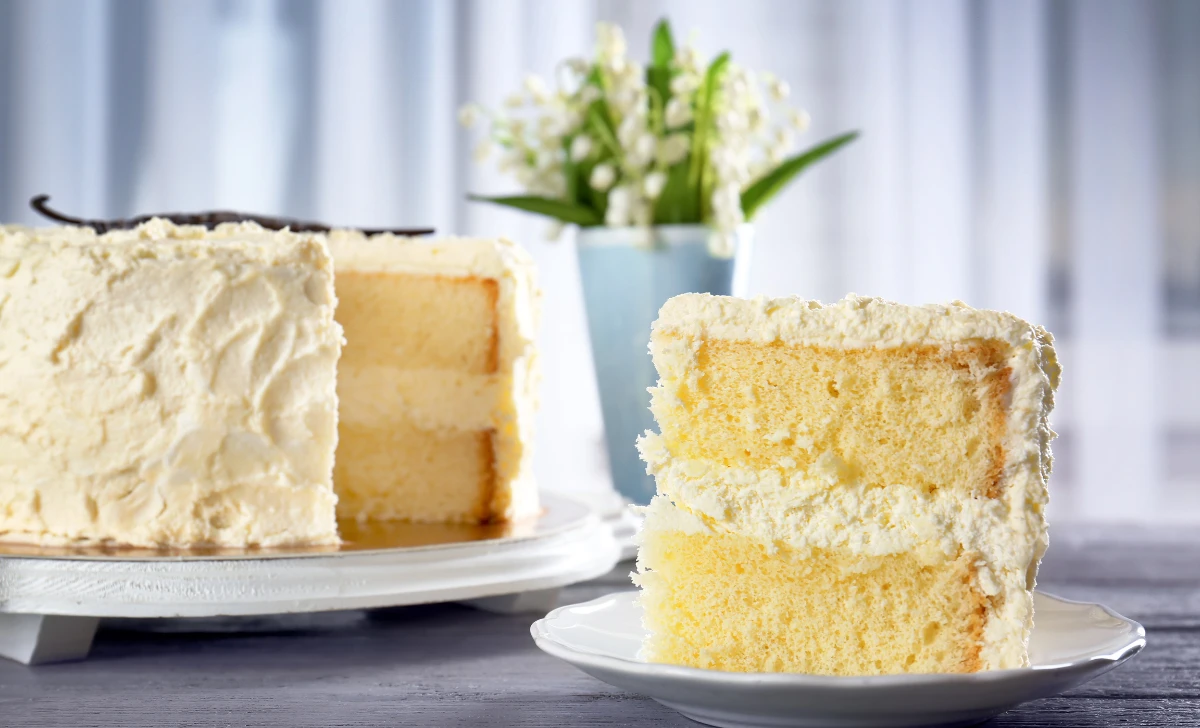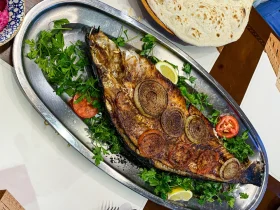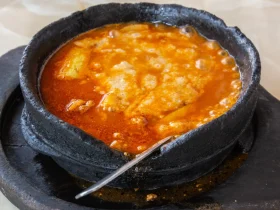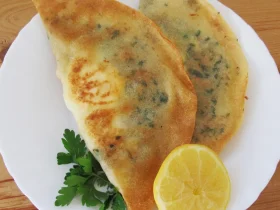Who doesn’t love a slice of moist and fluffy vanilla cake? Vanilla cake is a classic dessert that is loved by people of all ages. Whether it’s a birthday, anniversary, or any other special occasion, a vanilla cake always brings joy and happiness. In this article, we will take you through a step-by-step guide on how to make a delicious vanilla cake from scratch. So, put on your apron and get ready to bake a mouthwatering treat!
[ez-toc]
History
The history of vanilla cake dates back centuries, intertwining with the rich culinary traditions of different cultures around the world. Vanilla, known for its unique and delightful flavor, has been a prized ingredient used in various desserts and baked goods. In this article, we will delve into the fascinating history of vanilla cake, exploring its origins and evolution into the beloved treat we enjoy today.
Ancient Origins
The story of vanilla cake begins with the discovery of vanilla itself. Vanilla is derived from the orchid genus Vanilla, which is native to Mesoamerica, particularly Mexico and Central America. The ancient Mesoamerican civilizations, including the Mayans and Aztecs, were among the first to cultivate and use vanilla. They prized vanilla for its aromatic properties and used it in various culinary preparations, including beverages and desserts.
European Introduction
Vanilla remained a well-kept secret of Mesoamerica until the arrival of the Spanish conquistadors in the 16th century. It was during the conquest of Mexico that the Spanish explorer Hernán Cortés encountered vanilla and brought it back to Europe. However, vanilla’s popularity in Europe did not immediately soar due to its unfamiliarity and the challenges of cultivation outside its native region.
Orchid Mysteries and Pollination
One of the reasons vanilla struggled to gain popularity in Europe was the mystery surrounding its pollination. It was not until the mid-19th century that the French botanist Charles Morren and the slave Edmond Albius discovered the manual pollination technique for vanilla orchids. This breakthrough revolutionized vanilla cultivation, making it possible to grow vanilla outside of its native lands.
Rise of Vanilla Cake
With the availability of vanilla on a larger scale, its use in baking and confectionery became more widespread. Vanilla cake emerged as a delightful creation, capturing the essence of this exquisite flavor. The simplicity of vanilla cake, with its light and tender crumb infused with the delicate aroma of vanilla, made it an instant hit among dessert enthusiasts.
Modern Variations
Over time, vanilla cake has evolved to include various adaptations and flavor combinations. From classic vanilla sponge cake to layered cakes with decadent fillings and frostings, the possibilities are endless. Creative bakers have introduced unique twists to vanilla cake, incorporating elements like fresh fruits, chocolate, and even floral flavors to enhance the taste and presentation.
Vanilla Cake Today
Today, vanilla cake continues to hold a special place in our hearts and on our dessert tables. Whether it’s a birthday celebration, a wedding reception, or a simple gathering with loved ones, a slice of moist and flavorful vanilla cake is always a crowd-pleaser. The versatility of vanilla cake allows it to be enjoyed in countless forms, from cupcakes and sheet cakes to tiered masterpieces.
Time
| Step | Time (Approx.) |
|---|---|
| Gathering Ingredients | 10 minutes |
| Preparing the Cake Batter | 20 minutes |
| Baking the Cake | 30-35 minutes |
| Making the Buttercream Frosting | 10 minutes |
| Assembling and Decorating the Cake | 15 minutes |
Now that we have an overview of the cooking and preparation time, let’s dive into each step in detail.
Ingredients
| Ingredients | Quantity |
|---|---|
| All-purpose flour | 1 cup |
| Granulated sugar | 1/2 cup |
| Eggs | 1 |
| Unsalted butter, melted | 1/4 cup |
| Vanilla extract | 1 teaspoon |
| Baking powder | 1 teaspoon |
| Salt | 1/4 teaspoon |
| Milk | 1/4 cup |
| Butter, softened | 1/2 cup |
| Powdered sugar | 1 cup |
| Milk | 1-2 tablespoons |
| Pinch of salt |
Please note that these quantities are for a small 2-person serving. Adjust the measurements accordingly if you wish to make a larger cake.
Directions
1. The Importance of Choosing Quality Ingredients
Before you begin, ensure that you have high-quality ingredients for the best flavor and texture. Fresh eggs, unsalted butter, pure vanilla extract, and good-quality all-purpose flour will make a significant difference in the final outcome of your vanilla cake.
2. Gathering the Ingredients
Collect all the ingredients listed in the table and measure them accurately to ensure the perfect balance of flavors in your vanilla cake. Having everything ready and within reach will streamline the preparation process.
3. Preparing the Cake Batter
Step 1: Mixing the Dry Ingredients
In a mixing bowl, combine the all-purpose flour, granulated sugar, baking powder, and salt. Whisk them together until well incorporated.
Step 2: Combining the Wet Ingredients
In a separate bowl, whisk together the egg, melted unsalted butter, vanilla extract, and milk. Mix until the ingredients are well combined and the mixture is smooth.
Step 3: Incorporating the Wet and Dry Ingredients
Gradually pour the wet mixture into the bowl with the dry ingredients. Stir the batter gently until the ingredients are fully incorporated, and no lumps remain. Be careful not to overmix, as it can result in a dense cake.
4. Baking the Cake
Step 1: Preparing the Cake Pans
Preheat your oven to the recommended temperature and grease the cake pans. Dust them lightly with flour to prevent sticking.
Step 2: Pouring the Batter
Evenly divide the cake batter between the prepared cake pans. Smooth the tops with a spatula to create an even surface.
Step 3: Baking
Place the cake pans in the preheated oven and bake for approximately 30-35 minutes. To check for doneness, insert a toothpick into the center of the cakes. If it comes out clean or with a few crumbs, the cakes are ready.
Step 4: Cooling
Remove the cakes from the oven and let them cool in the pans for 10 minutes. Then, transfer them to a wire rack to cool completely before frosting.
5. Making the Vanilla Buttercream Frosting
Step 1: Creaming the Butter
In a mixing bowl, beat the softened butter until smooth and creamy.
Step 2: Adding the Powdered Sugar
Gradually add the powdered sugar, one cup at a time, and continue beating until well combined.
Step 3: Incorporating Milk and Salt
Add a tablespoon of milk at a time to achieve the desired consistency. Mix well after each addition. Finally, add a pinch of salt and beat the frosting until light and fluffy.
6. Assembling and Decorating the Cake
Step 1: Leveling the Cakes
If the cake layers have domed, use a serrated knife to level off the tops, creating an even surface.
Step 2: Frosting the Cake
Place one cake layer on a serving plate. Spread a generous amount of vanilla buttercream frosting on top. Carefully place the second cake layer on top and cover the entire cake with the remaining frosting. Use a spatula or a frosting knife to create a smooth and even finish.
Step 3: Decorate as Desired
Let your creativity shine! You can decorate the cake with additional frosting, sprinkles, fresh fruits, or any other desired toppings.
Equipment Required
Nutrition Information
| Nutrient | Amount Per Serving |
|---|---|
| Serving Size | 1 slice (1/8th of cake) |
| Calories | 350 |
| Total Fat | 18g |
| Saturated Fat | 10g |
| Trans Fat | 0g |
| Cholesterol | 80mg |
| Sodium | 240mg |
| Total Carbohydrate | 44g |
| Dietary Fiber | 0g |
| Sugars | 30g |
| Protein | 4g |
Please note that the nutrition information may vary slightly depending on the specific ingredients and brands used. These values are approximate and are intended as a general guideline.
Tips
- Use room temperature ingredients to ensure smooth mixing and even baking.
- Don’t overmix the batter to avoid a dense texture.
- Preheat your oven for optimal baking conditions.
- Allow the cakes to cool completely before frosting to prevent the frosting from melting.
- Experiment with different decorations and flavor variations to personalize your vanilla cake.
Pros & Cons
| Pros | Cons |
|---|---|
| ✔️ Easy to make | ❌ Requires baking skills |
| ✔️ Classic and versatile | ❌ High in calories |
| ✔️ Delightful vanilla flavor | ❌ Contains saturated fat |
| ✔️ Homemade and customizable | ❌ Time-consuming |
| ✔️ Perfect for celebrations | ❌ May not be suitable for dietary restrictions |
Conclusion
Congratulations! You have reached the end of our vanilla cake recipe journey. By following the detailed instructions, you now have the knowledge and confidence to create a homemade vanilla cake that will impress and delight your loved ones.
The allure of a vanilla cake lies in its simplicity and versatility. The delightful aroma of vanilla, combined with the moist and tender crumb, makes this cake a timeless classic. It is the perfect canvas for creativity, allowing you to personalize it with your favorite frosting, decorations, or even flavor variations.
While this recipe requires some baking skills and time, the end result is well worth the effort. The joy of witnessing the cake rise in the oven, the anticipation as it cools, and the satisfaction of that first bite is an experience like no other.
So, why not embark on this culinary adventure? Gather the quality ingredients, follow the step-by-step instructions, and let your kitchen be filled with the enticing aroma of a freshly baked vanilla cake. Whether it’s a special occasion or a simple treat to brighten up your day, this recipe is sure to bring smiles and delight to all who taste it.
Remember, baking is an art that allows you to express your creativity and spread happiness through delicious treats. So, put your skills to the test, and let the world savor the magic of your homemade vanilla cake.
Now, it’s time to roll up your sleeves, preheat that oven, and create a masterpiece that will be cherished and enjoyed by everyone. Happy baking, and may your vanilla cake bring joy and sweet memories to every occasion!
Facts
- 🎉 Fact 1: Vanilla, the Queen of Spices 🌼
- Did you know that vanilla is derived from the orchid species Vanilla planifolia? It is one of the most prized and popular flavors in the world, known for its delicate and sweet aroma. Vanilla has been cultivated for centuries and is often referred to as the “Queen of Spices.” Its use in cakes, desserts, and beverages dates back to ancient civilizations such as the Aztecs and Mayans.
- 🎂 Fact 2: A Royal Wedding Cake Fit for a Queen 👑
- One of the most iconic vanilla cakes in history is the royal wedding cake of Queen Victoria and Prince Albert in 1840. Their wedding cake was a grand centerpiece, standing at an impressive nine feet tall and adorned with intricate decorations. The cake was made with rich ingredients like butter, eggs, and of course, vanilla, symbolizing opulence and luxury.
- 🌍 Fact 3: Vanilla’s Global Journey ✈️
- Vanilla has an interesting global journey. It originated in Mesoamerica, but it wasn’t until the 16th century that it was introduced to Europe by Spanish conquistadors. From there, it spread to various parts of the world, including Madagascar, Tahiti, and other tropical regions. Today, Madagascar is the largest producer of vanilla, contributing to its global popularity.
- 🍨 Fact 4: The Rise of Vanilla Extract 🌿
- Vanilla extract became widely used in the 19th century, revolutionizing the way vanilla flavor was incorporated into recipes. It is made by steeping vanilla beans in alcohol, which extracts the rich and aromatic compounds. The introduction of vanilla extract made it easier for home bakers to enjoy the delightful flavor of vanilla in their cakes, cookies, and other treats.
- 🎁 Fact 5: The Perfect Canvas for Creativity 🎨
- One of the wonderful aspects of vanilla cake is its versatility. While vanilla cake is delightful on its own, it serves as the perfect canvas for creative variations and decorations. From adding fresh fruits and flavored fillings to intricate frosting designs and themed decorations, vanilla cake provides endless opportunities for bakers to showcase their artistic skills and imagination.
FAQ’s
Can I make cupcakes instead of a cake with this recipe?
Absolutely! You can use the same batter to make cupcakes. Adjust the baking time accordingly, usually around 15-20 minutes.
Can I use a different type of frosting for the vanilla cake?
Yes, absolutely! Vanilla cake pairs well with various frostings like cream cheese frosting, chocolate ganache, or even a fresh fruit glaze. Choose your favorite frosting to personalize the cake according to your taste.
Can I make the cake in advance?
Yes, you can bake the cakes in advance and store them in an airtight container at room temperature for up to 2 days. Frost the cake the day you plan to serve it for optimal freshness.
Can I freeze the cake for later use?
Yes, you can freeze the unfrosted cake layers. Wrap them tightly in plastic wrap and store in an airtight container for up to three months. Thaw before frosting and assembling.
How long will the frosted cake stay fresh?
Once frosted, store the cake in a cake container or cover it with a cake dome. It will stay fresh at room temperature for up to 2-3 days. If it’s warm or humid, consider refrigerating the cake to maintain its freshness.
Can I make the cake without eggs?
While eggs contribute to the texture and structure of the cake, you can try using egg substitutes like applesauce, mashed bananas, or yogurt. Keep in mind that the texture and flavor may vary slightly.
Can I substitute ingredients like butter or sugar with healthier alternatives?
Yes, you can make some substitutions. For butter, you can try using a vegetable oil or coconut oil. As for sugar, you can experiment with natural sweeteners like honey or maple syrup. Keep in mind that these substitutions may affect the texture and taste of the cake.
Can I add additional flavors to the vanilla cake batter?
Absolutely! Vanilla cake is versatile, and you can add various flavors to the batter. Consider adding lemon zest, almond extract, or even spices like cinnamon or nutmeg to enhance the flavor.
Can I use a different type of flour, such as whole wheat flour or gluten-free flour?
Yes, you can experiment with different flours. Keep in mind that using whole wheat flour may result in a denser texture, while gluten-free flour blends may require additional ingredients for structure. Follow specific recipes and guidelines for best results.
How do I ensure that my cake layers come out flat and even?
To achieve flat and even cake layers, make sure to properly measure and level your ingredients. Also, ensure that your oven is preheated accurately and the cake pans are greased and lined. If needed, you can also trim the top of the baked cakes to create an even surface.












Leave a Review